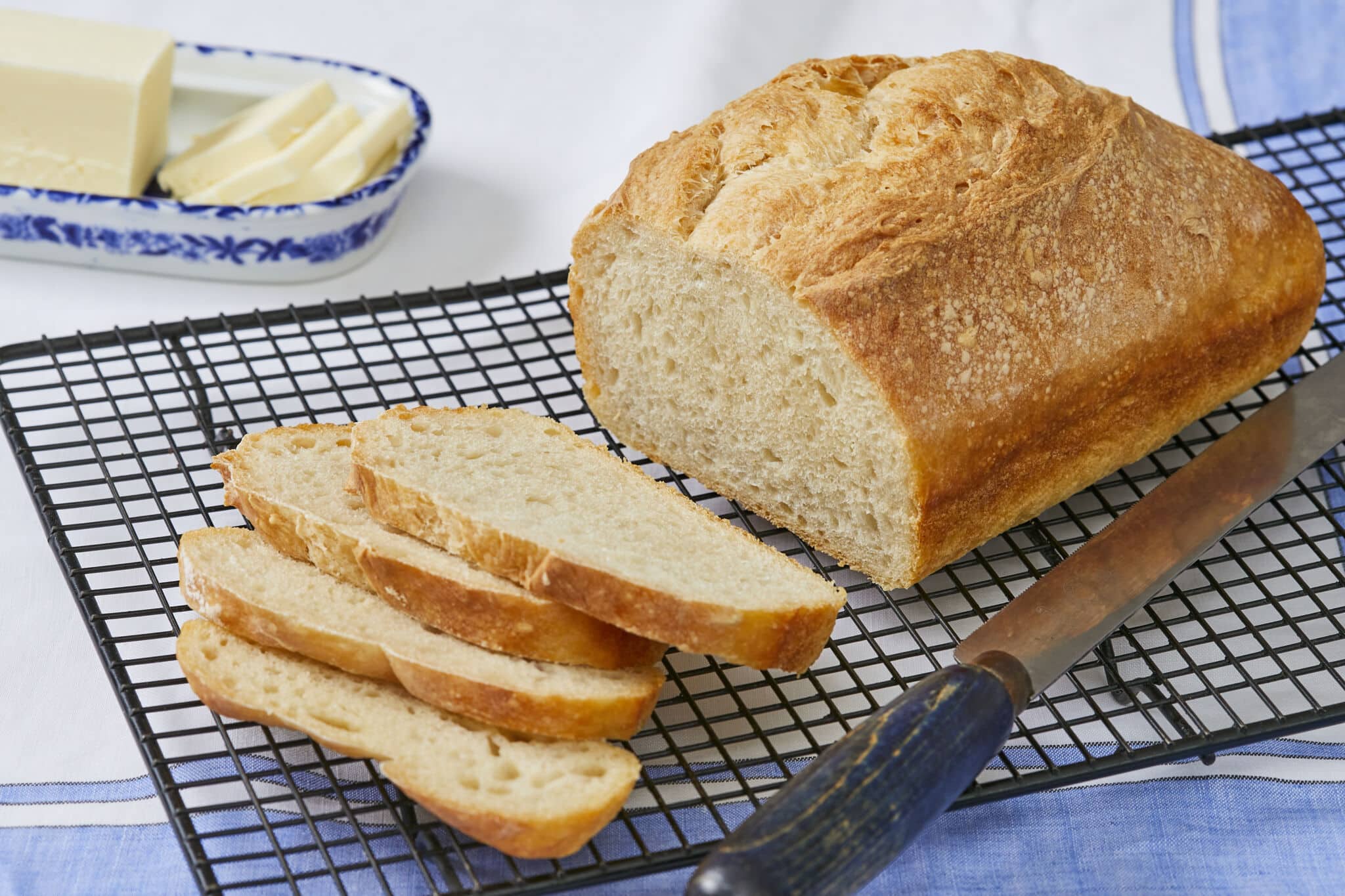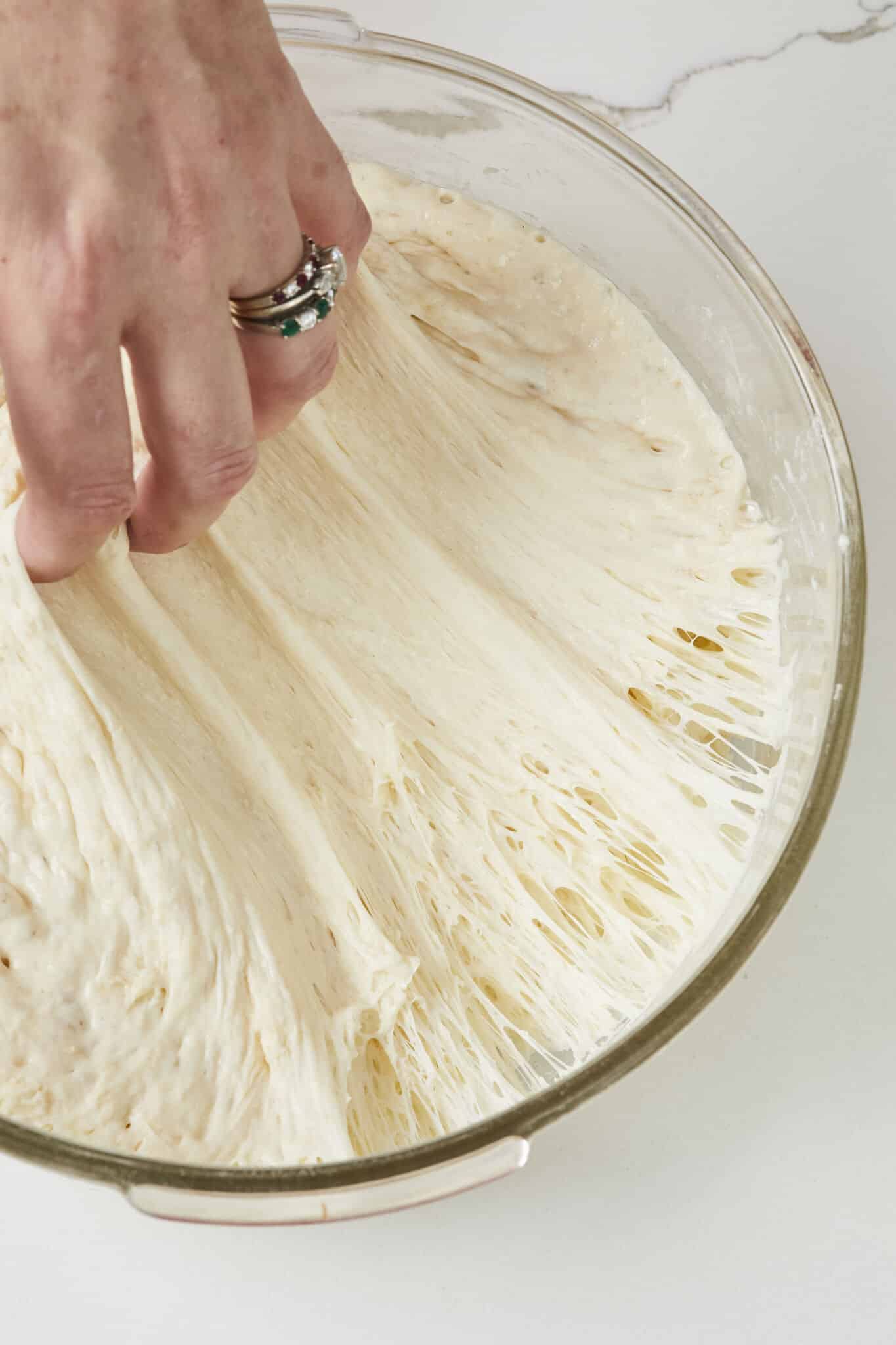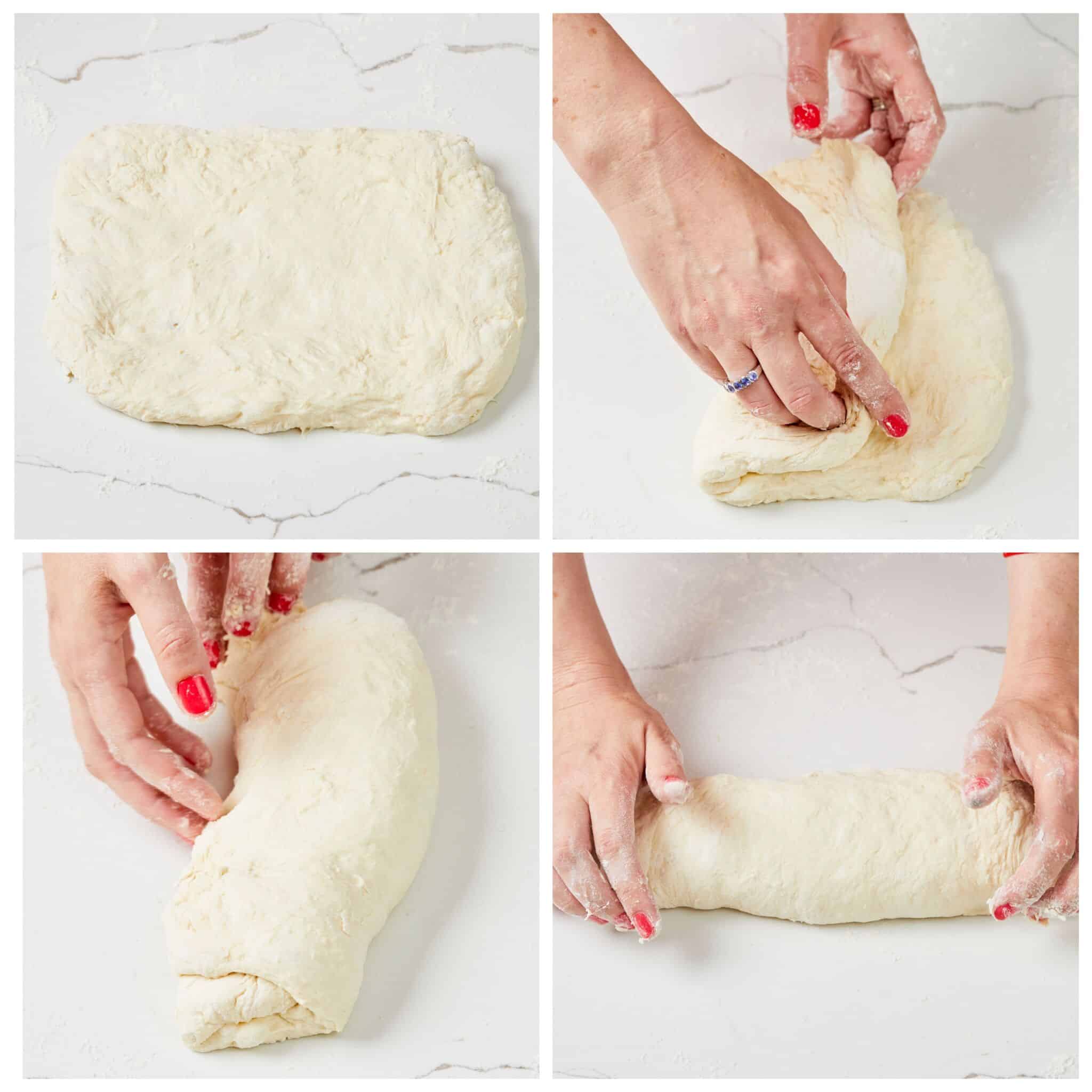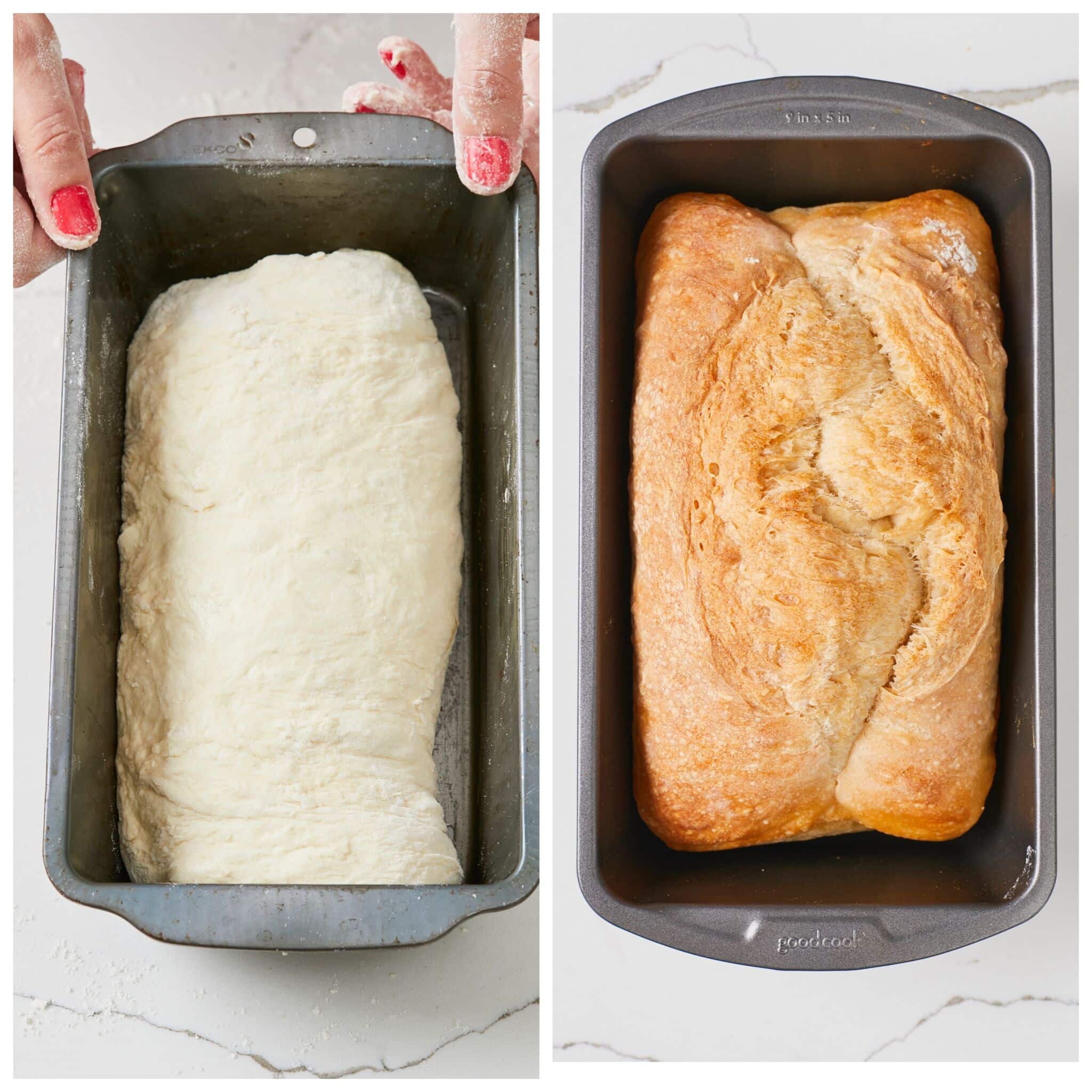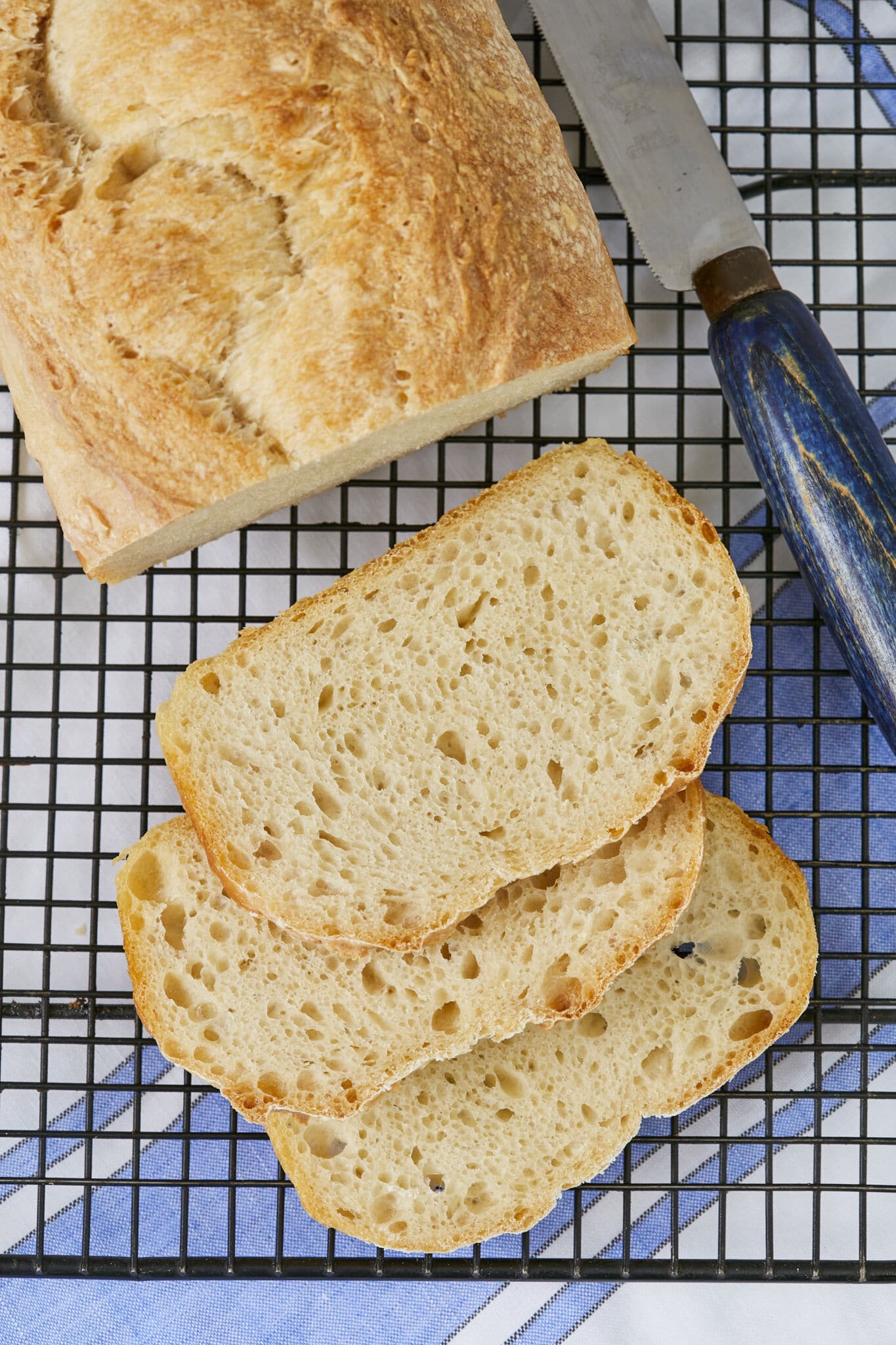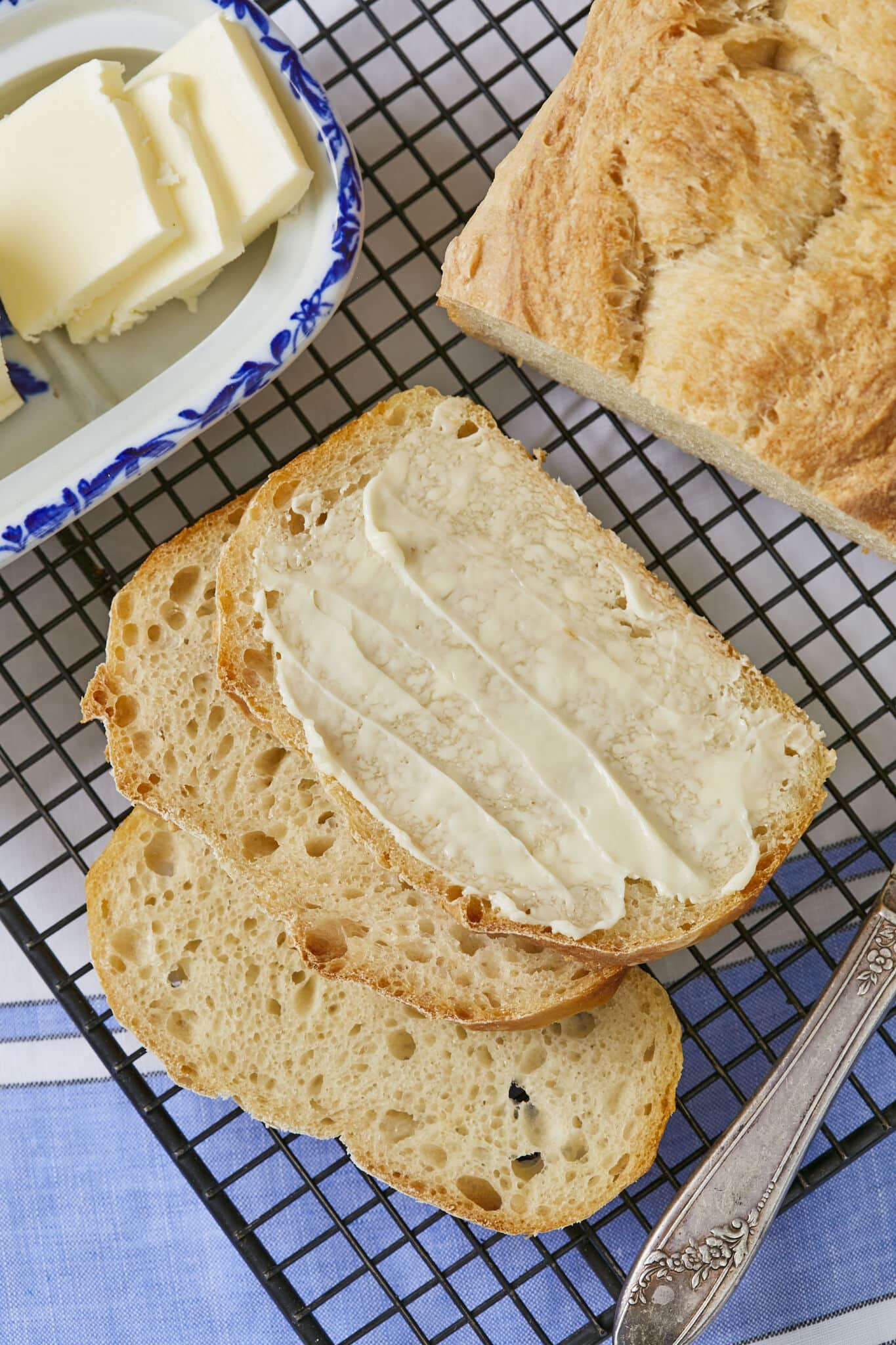Hi Bold Bakers! WHY YOU”LL LOVE THIS RECIPE: This 5-Ingredient No Knead Sandwich Bread is a true testament to simplicity and taste. It requires the minimal work and time to prepare with just 5 pantry staples to create a wholesome canvas for gourmet fillings, jam, compound butter, flavored cream cheese and more! The no-knead approach brought homemade bread to a professional level without any special equipment, artificial preservatives or additives. Already have an account? I love seeing how much bold bakers rave about my Perfect Homemade White Bread (Sandwich Bread Recipe)! Because we can’t agree more on the fact that nothing compares to the sense of pride and satisfaction of nourishing our family with something good and that’s good for our bodies! I knew I had to come up with an easier version for everyone so even beginners have the confidence to work with yeast to impress themselves!
Table of Contents
What is 5-Ingredient No Knead Sandwich Bread?
5-Ingredient No-Knead Sandwich Bread is an easy and delicious homemade bread with a crisp crust and a fluffy, tender crumb, which only requires only five simple ingredients and doesn’t involve traditional kneading or a special tool.
It’s a popular egg-free and dairy-free variation of no-knead bread recipes and a great addition to my collection. Savory no-knead bread includes The Easiest No Knead Baguette, No-Knead Homemade English Muffins, Best-Ever Pizza Dough (No Knead), No-Knead Homemade Crumpets, The Most BUBBLY Focaccia Pizza (No-Knead), and Bakery-Style No-Knead Ciabatta Bread. Sweet no-knead bread includes No-Knead Best-Ever Cinnamon Rolls, Cinnamon Raisin Bread (No-Knead), Baked No-Knead Donuts, Brioche Dough (No-Knead), Homemade Challah Bread (No Knead).
Tools You Need
Measuring cups and measuring spoons Large mixing bowl Wooden spoon or hand whisk 9×5-inch (23×12½ cm) loaf pan
Key Ingredients and Why
Instructions
Q1 What’s the difference between no knead sandwich bread and traditional Sandwich Bread?
A: No knead sandwich bread and traditional sandwich bread mainly differ in the method and final texture.
Salt Salt enhances the flavor, prevents the dough from rising too fast, strengthens the gluten, improves the extensibility, and acts as a natural preservative to extend the bread’s shelf life. Yeast Instant yeast can be put directly into the dry ingredients. Note to avoid direct contact with salt by mixing it with flour first so it won’t get deactivated. If preferred, for each teaspoon of instant yeast, use 1 ¼ teaspoons of active dry yeast instead. Bring the liquid in your recipe to blood temperature and mix in active dry yeast. Let it sit at room temperature for roughly 5 minutes until foam forms on top. Mix the mixture with remaining ingredients and continue per the instructions. Warm Water Lukewarm water activates and optimizes the growth of yeast. To tell whether the water is lukewarm, take a small amount of water and put your finger in it, if it feels close to your body temperature or slightly warmer, then it’s lukewarm water.
Final proofing: Cover and let rise at a warm place until doubled in size, about 1 ½ – 2 hours. Towards the end of the rise time, preheat the oven to 450°F (230°C). Bake the bread: Dust the loaf with a bit of flour and score down the center with a sharp knife.
Bake for 35-40 minutes, until the top of the loaf is a deep golden brown, let cool on a wire rack completely before slicing.
How to Store 5-Ingredient No Knead Sandwich Bread?
Fully cool the bread before storing it.
Store the bread in an airtight container at room temperature for up to 4 days. Alternatively, slice the whole loaf and then freeze it to make it stay fresher longer. Lightly toast what you need.
Traditional Sandwich bread relies on kneading to connect protein and water to build the gluten network with even crumb. In comparison, no knead sandwich bread in this recipe relies on extended fermentation with irregular air pockets. During this time, yeast works through a slow NATURAL biological reaction by feeding on the sugars in flour (and added sugar if applicable) to release carbon dioxide to make the dough rise. So it only needs a very small amount of yeast to get started. The bonus is that the long fermentation also releases alcohol to add profound flavors. Time does most of the job for you!
Q2 What’s the difference between no knead sandwich bread and No Knead Artisan Bread?
A: No Knead Sandwich bread and No Knead Artisanal Bread are two distinct types of bread with their own characteristics and purpose.
No Knead Sandwich bread is typically baked in a rectangular loaf pan to make the signature uniform slices. A softer and tender crumb make them ideal for holding fillings without falling apart. In comparison, artisanal bread is often baked on an open tray or pizza stone into irregular shapes with chewier rustic-looking crust and more airy open crumb. Artisan bread is more savored on its own or with cheeses, dips, olive oil, and various spreads.
Yes, you can make this recipe with only bread flour or only all-purpose flour. But you won’t get a little chew and softness at the same time. Yes, you can adapt this No Knead Sandwich Bread recipe to incorporate a sourdough starter. Stay tuned for a sourdough sandwich bread recipe or enjoy this Perfectly Crusty Sourdough Bread for now!
No. This is a yeast recipe which requires gluten to work with yeast to build the structure for the bread. Therefore, gluten-free flour(s) can’t work with this recipe. Check out my Keto and Gluten-Free Bread Recipe or adapt my Hearty No-Yeast Bread Recipe. For most recipes that don’t use yeast as a raising agent, you can substitute GF all-purpose blend flour for all-purpose flour at a 1:1 ratio (which usually contains xanthan gum as a binding agent). Or substitute almond flour starting at 1:1 for all-purpose (white) flour. More resting time before baking will help hydrate almond flour to bind all ingredients better, or ½ – 2 tsp xanthan gum or cornstarch in each cup of almond flour will also work as a binding agent. Note to hold back some liquid by using up to ½-¾ in one go and adjust it accordingly to get the same consistency as the recipe.
Yes, you can incorporate herbs, garlic, cheese, or other flavorings after you’ve got a sticky dough for a customized loaf.
Yes, you can substitute up to half of the flour (all-purpose flour here) with whole grain flours for added nutritional value and flavor. I don’t suggest you use more than 50% whole grain flour so you won’t end up with a heavy or dense result.
You can adjust the salt content to your taste, but keep in mind that less salt means less flavor and chew.
You can freeze the raw dough after bulk fermentation at room temperature in an oiled bag/container.
This will avoid over proofing. When it comes to baking, defrost it at room temperature and remove it from its bag as soon as possible. Then knock out the air, shape the dough and allow it to proof for baking. It should double in size and your finger imprint will stay upon poking.
Gemma’s Pro Chef Tips
You can easily double this recipe to make 2 loaves. I strongly suggest taking your dough to the full 18 hours for the best flavor and texture. Sesame or sunflower seeds are a nice add-in for a heartier loaf: stir in ½ cup (2½ oz/71 g) when you are making the dough. After the 18 hour bulk ferment you can place the bowl in the fridge for up to 2 days. Just note the cold dough will take longer to proof in the loaf pan so be patient. Make completely from scratch sandwiches using this bread with Homemade Peanut Butter or Almond Butter, Sweet and Boozy peach Whiskey Jam, and Homemade Strawberry Jam!
More No Knead Bread Recipes
The Easiest No Knead Baguette No-Knead Homemade English Muffins Bakery-Style No-Knead Ciabatta Bread No-Knead Best-Ever Cinnamon Rolls Baked No-Knead Donuts
